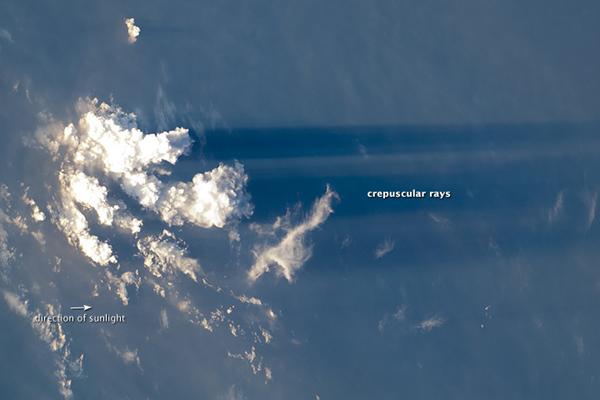Rare Rays Stream Through Clouds


The sight of shafts of light streaming down from the heavens through a layer of clouds has provided many an artist, scientist, and philosopher with inspiration. Atmospheric scientists refer to this phenomenon as crepuscular rays, referring to the typical observation times at either sunrise or sunset.
The shadowed areas bounding the rays are formed by clouds or mountain tops that block the path of sunlight or moonlight. However, obstructions alone are not sufficient to create crepuscular rays. The light also must be scattered by airborne dust, aerosols, water droplets, or molecules of air, providing a visible contrast between shadowed and illuminated parts of the sky.
When observed from the ground, crepuscular rays appear to radiate outwards from the source of light due to the effects of distance and perspective. However, the rays are actually parallel
This astronaut photograph from the International Space Station provides an unusual viewing perspective from above the rays and a clear illustration of their parallel nature. The sun was setting to the west (image left) on the Indian subcontinent, and cumulonimbus cloud towers provided the shadowing obstructions. The rays are being projected onto a layer of haze below the clouds.
- Spectacular Northern Lights Display Leaves Skywatchers Spellbound
- Huge Haboob Hits Lubbock, Texas
- Quadruple Rainbow Photographed for First Time
Get the world’s most fascinating discoveries delivered straight to your inbox.



